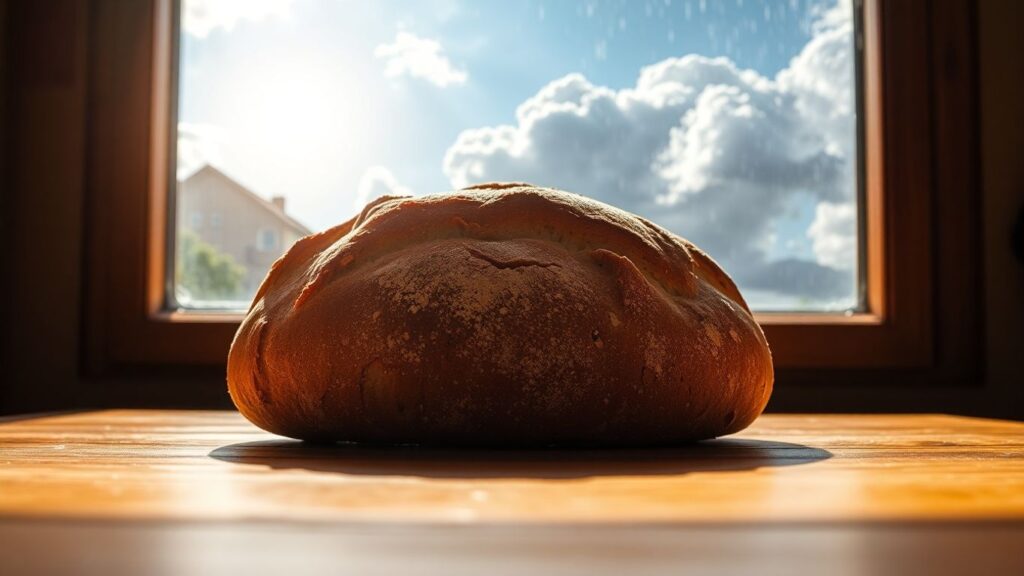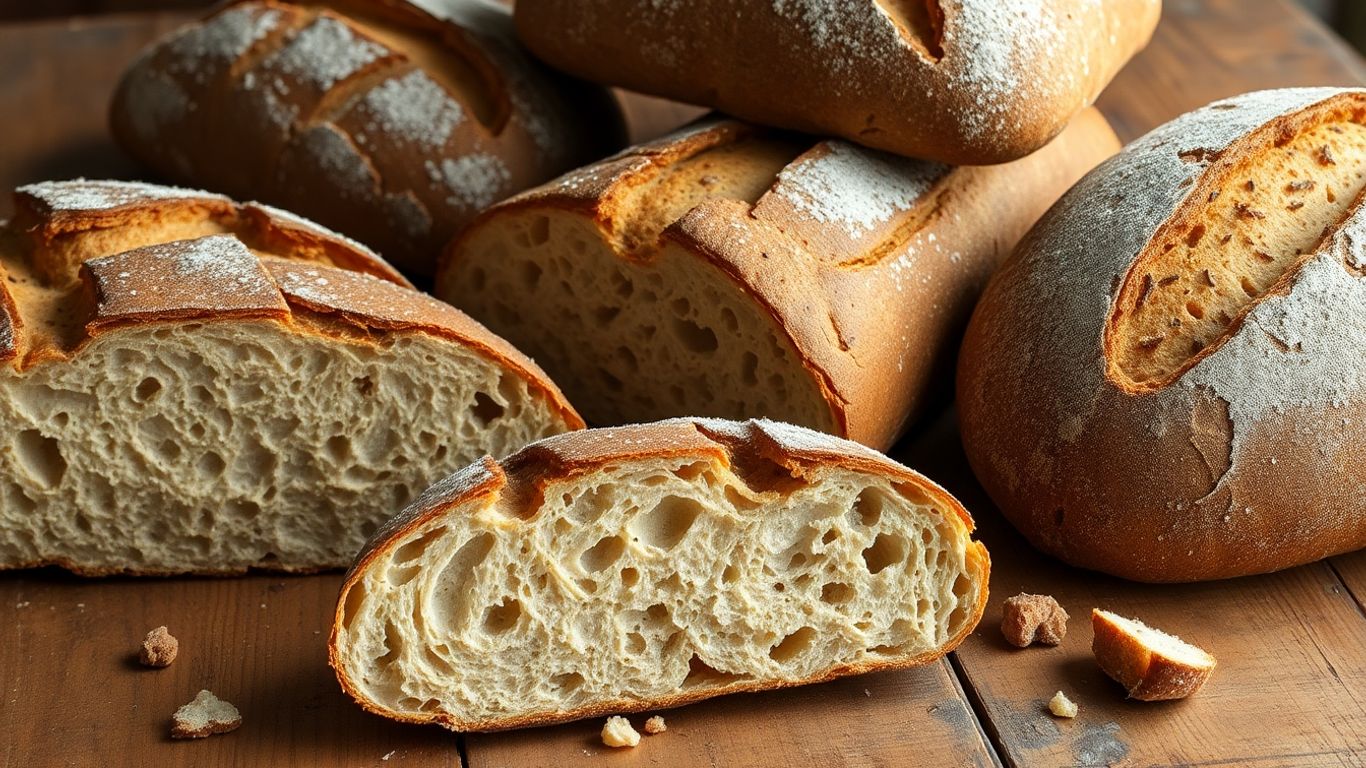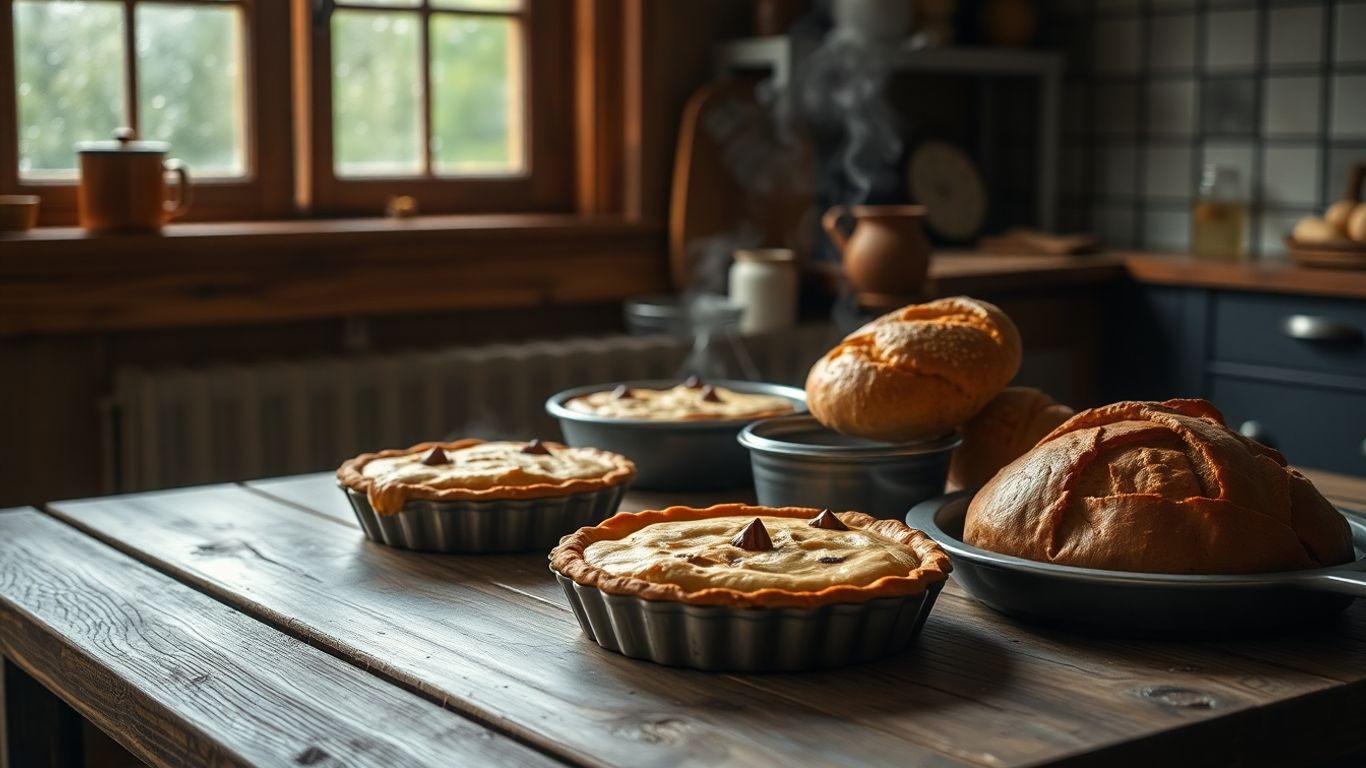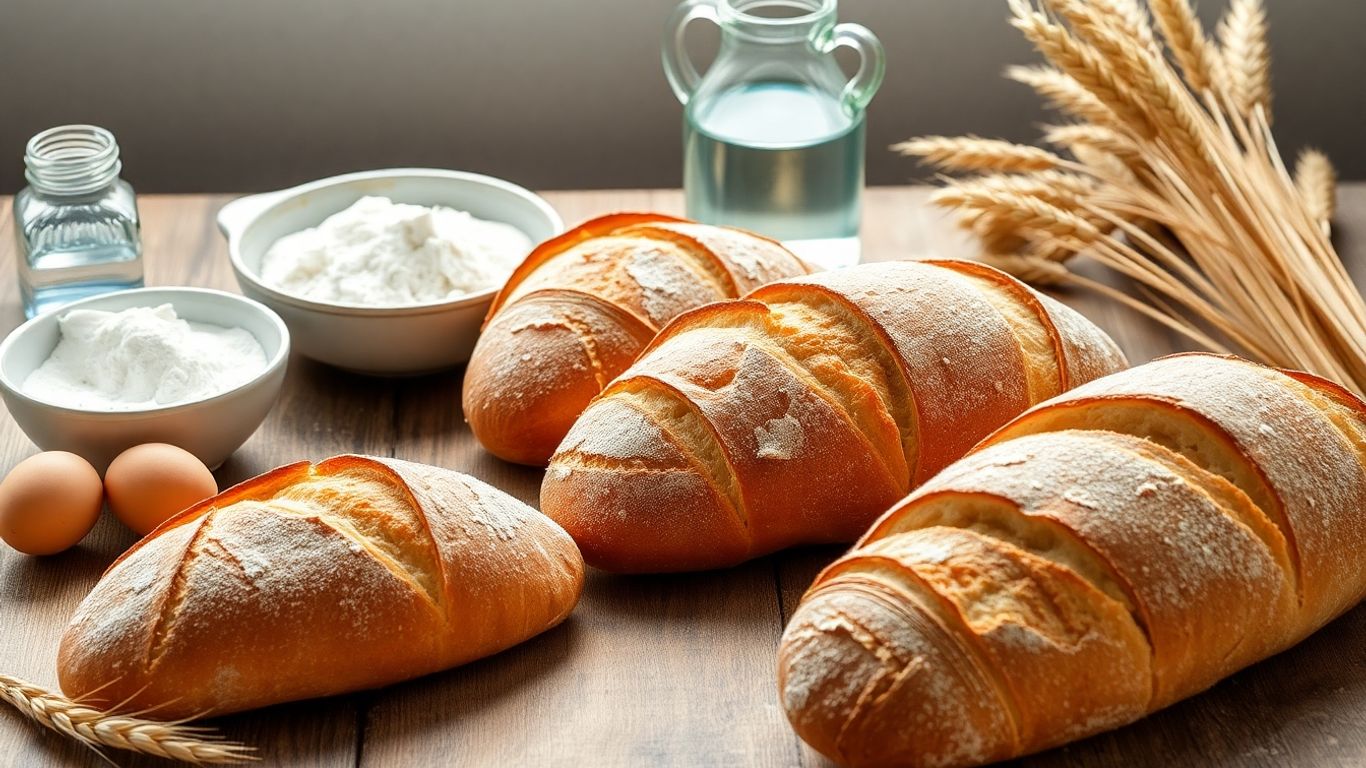Ever noticed your bread turns out different depending on the weather? One day it rises like a champ, the next it barely gets off the ground. I used to think it was just bad luck, but it turns out, weather really does mess with baking temperature and how your dough behaves. My nan always said to keep an eye on the weather forecast before starting a loaf, and honestly, she was onto something. So, if you’re tired of your bread being a bit hit or miss, let’s talk about how weather and baking temperature can make or break your daily bread.
Key Takeaways
- Weather changes like humidity and barometric pressure can mess with your dough, so you might need to tweak your baking temperature and timing.
- Cold kitchens slow down proofing, while hot ones can speed things up or give you a thicker crust—keep an eye out and adjust as you go.
- If you want more predictable bread, try using stable ingredients and control your kitchen’s temperature when you can.
Understanding How Weather Influences Baking Temperature
Weather isn’t just something to moan about when you’re kneading dough in a chilly kitchen. It actually plays a sneaky, hands-on role in whether your sourdough turns out light and airy or a bit of a brick. Let’s dig in to how the world outside your window tweaks your bread inside the oven.
Barometric Pressure and Yeast Activity in Bread Making
Most folks don’t think about the pressure outside unless there’s a storm brewing, but it can mess with your bread more than you’d expect. Here’s what actually happens:
- Low barometric pressure (like before a rainstorm) makes yeast work faster, so dough rises quicker and can get overproofed if you’re not watching.
- High pressure (clear, sunny days) means yeast is a bit slower, giving your dough time to develop flavour, but you’ll need extra patience.
- If you’re high up in the hills or mountains, the lower pressure overall makes things unpredictable – you might notice your loaves always race through the rise or struggle to get off the ground.
| Barometric Pressure | Effect on Yeast | What to Watch For |
|---|---|---|
| High | Slower rising | Delayed proof, subtle taste |
| Low | Faster rising | Risk of collapse, big holes |
Even the best bakers check the weather before deciding whether to speed up or slow down their bread schedule.
Humidity’s Role in Dough Fermentation
Humidity is the silent partner in every bake. Sometimes you get a sticky mess when all you wanted was a soft dough. Other times, everything’s dry as a bone and needs splashes of extra water.
Some key things humidity does:
- Adds extra moisture to flour, making doughs stickier – you might need to dust your worktop or throw in a bit more flour.
- Speeds up fermentation, since yeast loves a moist home – warmer, muggy days make dough double in size much faster.
- Dries out the crust if too little humidity is around; in very dry climates, you’ll need to cover your loaves well.
Not sure what to do when your kitchen feels more like a sauna or desert? Here’s a quick fix list:
- In high humidity: reduce water in your recipe a smidge, and have extra flour ready.
- In low humidity: keep dough covered tightly while it proofs, and watch out for dry, cracked crusts.
Weather can’t be controlled, but understanding how it changes your bread gives you the upper hand, even if the forecast is all over the place.
Adjusting Your Baking Techniques for Changing Seasons

Every home baker soon finds out that changes in the weather can kick up all sorts of surprises in the kitchen. Some days, your dough rises fast. Other times, it slogs along like it just rolled out of bed. Being able to tweak your technique when the seasons change is what really sets your bread apart.
Cold Climates and the Impact on Proofing Times
When winter hits and your kitchen cools down, dough takes much longer to rise. Yeast loves warmth, so when it gets chilly, you have to get creative. Here are some ways to keep your bread from dragging its feet:
- Warm up your proofing spot—use an oven with the light on or near a radiator.
- Let ingredients come to room temperature before mixing.
- Extend the proofing time, but watch out for over-proofing.
| Temperature | Typical Proof Time |
|---|---|
| 20°C | 1-2 hours |
| 15°C | 2-3.5 hours |
| 10°C | Up to 6 hours |
If your house feels like an icebox, try covering the bowl and putting it somewhere less drafty—heat loss is a sneaky dough killer.
High Heat and Its Effect on Crust Formation
When summer rolls around and your kitchen heats up, the dough is all speed—sometimes too quick for its own good. This can mean an out-of-control rise or a chewy, thin crust. Here’s how you can keep things balanced:
- Use colder water to slow down fermentation.
- Shorten your proofing time to avoid overproved dough.
- Keep an eye on crust colour—breads brown faster in high heat.
| Outdoor Temp | Effect You Might See | Fix |
|---|---|---|
| 25°C+ | Super-fast rise | Cooler water, chill dough |
| Over 28°C | Pale or cracked crust | Mist oven, lower heat |
Bakeries that make artisan loaves, like The Daily Knead in Totnes, often adjust their baking times and temperatures throughout the year, especially for their sourdough and pastries. It’s a constant small dance to keep every loaf just right—so don’t stress if it takes a bit of experimentation at home.
Weatherproofing Your Bread: Tips for Consistent Results

Let’s face it: baking bread at home can make you feel like you’re playing a never-ending game with Mother Nature. One day, your dough rises perfectly, and the next? It sits there, flat as a pancake, for hours. The main culprit – weather changes. With a bit of practice, you can keep your bread consistent, even when the forecast is all over the place.
Mitigating the Effects of Temperature Swings in Your Kitchen
Temperature jumps and drops can make your dough behave unpredictably. Here’s how to keep things steady:
- Proof your dough in a controlled environment whenever possible. Try using your oven (switched off) with the light on to gently warm the space.
- If it’s cold, place your bowl on top of your fridge, or wrap it up with a heavy tea towel.
- On hot, humid days, reduce your proofing time by 10-20%, checking dough more frequently to prevent over-proofing.
Here’s a quick table of temperature effects on proofing:
| Room Temp (°C) | Typical Proofing Time (hours) |
|---|---|
| 15–18 | 3–4 |
| 19–22 | 2–3 |
| 23–26 | 1.5–2 |
| 27+ | 1–1.5 |
The best thing I’ve learned is to keep an eye on how the dough looks and feels, not just the clock. There’s no shame in checking it a few times if the weather’s weird.
Choosing Ingredients That Respond Well to Baking Temperature Variations
Not all bread recipes are equal when the weather throws you a curveball. Here’s what to watch for:
- Use strong bread flour. It gives you more flexibility with proofing in either warm or cool rooms.
- Opt for instant or active dry yeast – they’re reliable. Avoid old yeast: always double-check its expiry, especially during seasonal temperature changes.
- Fats like butter or oil slow down fermentation, which can be useful for hot days.
If you’re baking a rustic loaf, a Dutch oven can help lock in heat and give your bread a fantastic crust, no matter what’s going on outside. For example, preheating your Dutch oven to 450ºF for a full 45 minutes gives you a steady environment for that perfect loaf every time.
- Swap out add-ins that dry out easily (like nuts and seeds) for options like olives or sundried tomatoes during particularly hot or dry spells.
- Try recipes designed for different moisture levels in the air, especially if you notice your dough drying out or going sticky more often.
Getting into the habit of adapting your technique to match the weather will give you way more consistent—and better tasting—bread. Sometimes, a few tiny tweaks make all the difference.
Weather can make baking bread tricky, but a few simple tips can help you get great results every time. Want to make sure your bread comes out perfect, no matter the season? Check out our easy guide and start baking like a pro. Visit our website for more helpful tips and tricks!
Wrapping It Up: Weather and Your Daily Bread
So, there you have it. Turns out, the weather really can mess with your bread – and not just in the way your nan used to warn you about. Hot days, cold snaps, humidity, even a sudden rainstorm can all play a part in how your loaf turns out. Sometimes, you do everything the same and still end up with a weird batch. It’s not just you! Maybe it’s the barometric pressure, or maybe your kitchen just has a mind of its own. Either way, don’t let a dodgy loaf get you down. Try out new recipes, experiment a bit, and remember, even the pros have off days when the weather’s acting up. At the end of the day, bread is as much about the process as it is about the result. So keep baking, keep tasting, and don’t be afraid to blame the weather now and then – your secret’s safe with me.
Frequently Asked Questions
Does the weather really change how my bread turns out?
Absolutely! Weather can mess with your bread more than you’d think. When it’s humid, your dough might get stickier and rise faster. On dry or cold days, it might take forever to rise. Even the air pressure outside can make a difference, especially if you’re baking with yeast. That’s why bakers often say no two loaves are ever exactly the same!
Why does my bread sometimes not rise well, even if I follow the recipe?
There are a bunch of reasons, but weather is a sneaky one. If it’s cold, your dough will rise slower, so you might need to wait longer. If it’s super hot, your dough could overproof and collapse. Even changes in air pressure, like before a storm, can slow down yeast. So, if your bread is acting up, check what’s happening outside!
Is it okay to try ‘no knead’ bread, or should I stick to kneading like my gran did?
Give ‘no knead’ bread a shot! It’s a fun way to make bread, and you don’t have to work your arms as much. The bread turns out a bit different—usually with a chewy crust and big holes inside. It’s not wrong to stick to your gran’s way either. Both methods work, so it’s really about what you like best and how much time you have.







